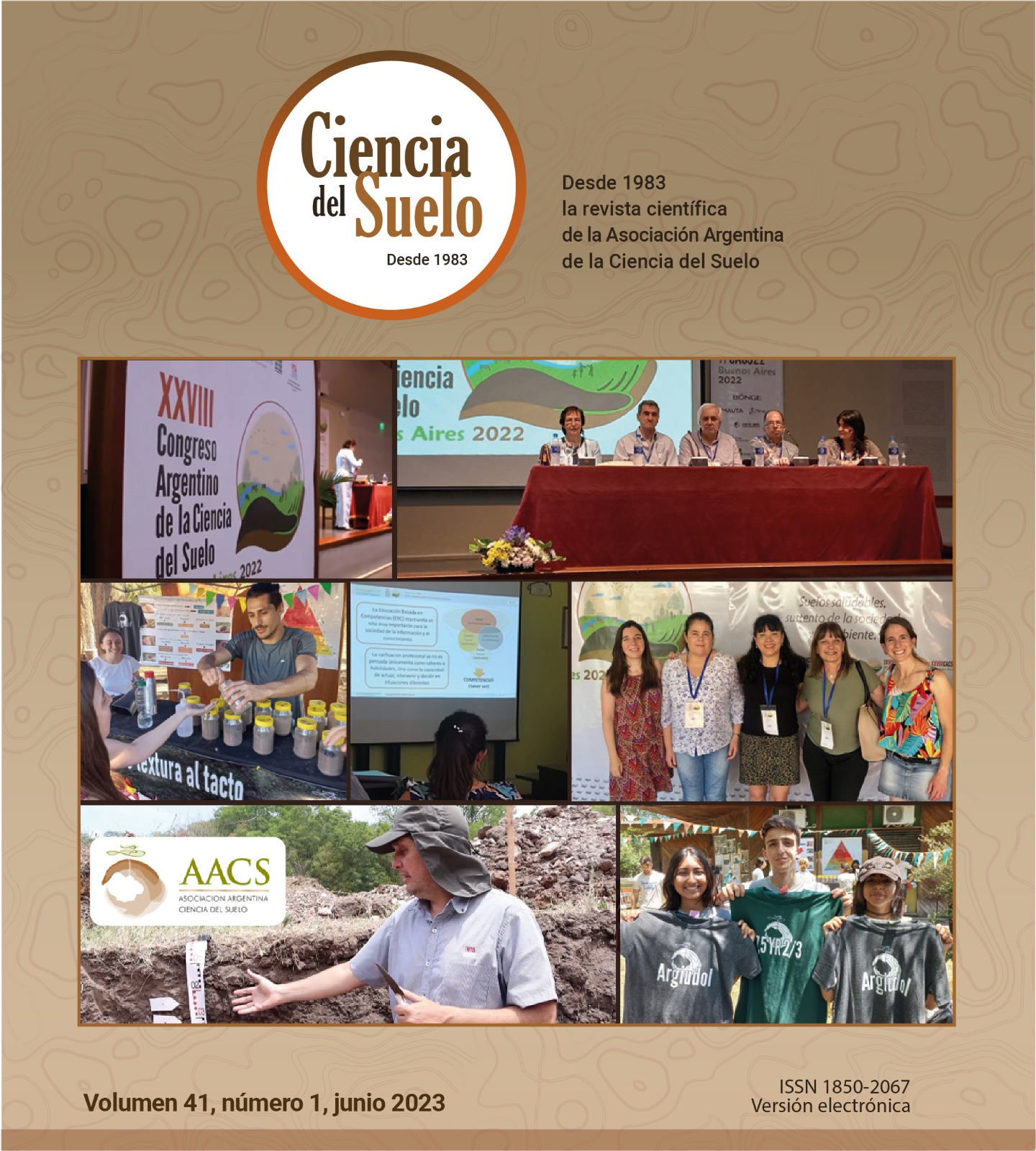Ver ítem
- xmlui.general.dspace_homeCentros e Institutos de InvestigaciónCIRN. Centro de Investigaciones de Recursos NaturalesInstituto de Clima y AguaArtículos científicosxmlui.ArtifactBrowser.ItemViewer.trail
- Inicio
- Centros e Institutos de Investigación
- CIRN. Centro de Investigaciones de Recursos Naturales
- Instituto de Clima y Agua
- Artículos científicos
- Ver ítem
¿Podemos mejorar las estimaciones de las emisiones de N2O en Argentina?
Resumen
La utilización de factores de emisión por defecto y de forma homogénea en todo el país en la estimación de las emisiones de óxido nitroso (N2O) derivadas de la aplicación de fertilizantes sintéticos en los Inventarios de Gases de Efecto Invernadero de Argentina, no permiten reflejar las características productivas locales y sus diferencias regionales. Los objetivos de este trabajo fueron: a) desagregar la información de los datos de nitrógeno (N)
[ver mas...]
La utilización de factores de emisión por defecto y de forma homogénea en todo el país en la estimación de las emisiones de óxido nitroso (N2O) derivadas de la aplicación de fertilizantes sintéticos en los Inventarios de Gases de Efecto Invernadero de Argentina, no permiten reflejar las características productivas locales y sus diferencias regionales. Los objetivos de este trabajo fueron: a) desagregar la información de los datos de nitrógeno (N) sintético aplicado por región, cultivo y clima y b) analizar y sintetizar el estado de situación de la investigación argentina en el desarrollo factores de emisión (FE) locales. Para el primer objetivo se desarrolló
una metodología para desagregar el dato de N aplicado por jurisdicción y cultivo. Para el segundo, se realizó una recopilación de trabajos científicos publicados en revistas nacionales e internacionales. Se logró desagregar el dato de aplicación de N por jurisdicción y cultivo mediante el cruzamiento de distintas fuentes de información: el 36,7% del N aplicado a nivel nacional se concentra en la Provincia de Buenos Aires, el 26,3 % en Córdoba, el 12% en Santa Fe y el 7,3% en Entre Ríos. El maíz (Zea mays L.) y trigo (Triticum aestivum L.) son los cultivos con mayor aplicación de N (33,9 y 23,3%, respectivamente). Por otro lado,
encontramos 11 trabajos que permiten proponer FE para estimar emisiones directas de N2O a partir de datos experimentales, y 15 que permiten estimar las fracciones de volatilización o lixiviación que resultan en emisiones indirectas de N2O. Los valores promedio estimados y reportados a partir de la bibliografía fueron: 0,0124 kg N2O–N (kg N)-1 (FE directas de N2O), 0,081 kg N volatilizado (kg N)-1 (fracción de volatilización) y 0,244 kg N (kg N)-1 (fracción de lixiviación). Estos valores promedio difieren en hasta un 25% con los utilizados actualmente en el Inventario Nacional.
[Cerrar]
Nitrous oxide (N2O) emission estimation derived from the application of synthetic fertilizers using default emission factors and in a homogeneous way throughout the country for the Inventories of Greenhouse Gases of Argentina do not reflect local productive characteristics and the regional differences. The objectives of this study were a) to disaggregate synthetic nitrogen (N) data by region, crop and weather, b) to analyze and synthesize the state of the
[ver mas...]
Nitrous oxide (N2O) emission estimation derived from the application of synthetic fertilizers using default emission factors and in a homogeneous way throughout the country for the Inventories of Greenhouse Gases of Argentina do not reflect local productive characteristics and the regional differences. The objectives of this study were a) to disaggregate synthetic nitrogen (N) data by region, crop and weather, b) to analyze and synthesize the state of the art of research in Argentina about the development of local N2O emission factors (FE) for synthetic fertilizers application. For the first objective, a methodology was developed that consists of multiplying the average N dose applied per region by the area sown per crop. For the second, a compilation of scientific papers published in national and international journals was carried out. It waspossible to disaggregate the N application data by district and crop by crossing different sources of information: 36.7% of N at country level is applied in the Province of Buenos Aires, 26.3% in Córdoba, 12% in Santa Fe and 7.3% in Entre Ríos. Corn (Zea mays L.) and wheat (Triticum aestivum L.) are the crops with the
highest application of N (33.9 and 23.3% respectively). Concerning the state of the art of local research, we found 11 papers that allow us to propose FE for direct N2O emissions, and 15 that allow us to estimate volatilization or leaching fractions that result in indirect N2O emissions. The average values estimated and reported from the literature were 0.0124 kg N2O–N (kg N)-1(direct N2O emission factors), 0.081 kg N volatilized (kg N)-1(volatilization fraction) and 0.244 kg N (kg N)-1 (leaching fraction). Compared to the values used in the National Inventory, the difference is up to 25%.
[Cerrar]

Autor
Said, Andrés Demián;
Posse Beaulieu, Gabriela;
Vangeli, Sebastián;
Popper, Azul;
Fuente
Ciencia del Suelo 41 (1) : 99-115 (2023)
Fecha
2023-06-02
Editorial
Asociación Argentina de la Ciencia del Suelo
ISSN
0326-3169
1850-2067
1850-2067
Documentos Relacionados
Formato
pdf
Tipo de documento
artículo
Proyectos
(ver más)
INTA/2019-PD-E3-I058-001, EMISIONES (GEI) EN LOS SISTEMAS AGROPECUARIOS y FORESTALES. MEDIDAS DE MITIGACIÓN
Palabras Claves
Derechos de acceso
Abierto
 Excepto donde se diga explicitamente, este item se publica bajo la siguiente descripción: Creative Commons Attribution-NonCommercial-ShareAlike 2.5 Unported (CC BY-NC-SA 2.5)
Excepto donde se diga explicitamente, este item se publica bajo la siguiente descripción: Creative Commons Attribution-NonCommercial-ShareAlike 2.5 Unported (CC BY-NC-SA 2.5)


